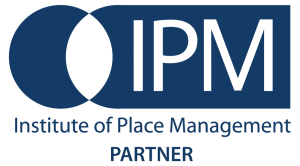[vc_row unlock_row=”” row_height_percent=”0″ override_padding=”yes” h_padding=”2″ top_padding=”5″ bottom_padding=”5″ overlay_alpha=”50″ gutter_size=”3″ shift_y=”0″ row_height_use_pixel=””][vc_column column_width_use_pixel=”yes” font_family=”font-134980″ overlay_alpha=”50″ gutter_size=”3″ medium_width=”0″ shift_x=”0″ shift_y=”0″ z_index=”0″ zoom_width=”0″ zoom_height=”0″ column_width_pixel=”800″][vc_column_text]
When it comes to environmental change, most people think of melting glaciers, arid sun-blasted deserts and increasingly extreme weather conditions. All of which are far removed from our everyday life. So, how can we relate? How can we realise the importance of environment in our urban setting?
[/vc_column_text][vc_single_image image=”61933″ img_size=”full” alignment=”center” media=”59474″ media_width_percent=”100″][vc_column_text]
In short, placemaking is the management of public spaces. As such, it is one of the most valuable tools in demonstrating how environmental change impacts all of us. This is because our public spaces are the first place we see the direct impact of environmental issues on our lives. They are where we witness these fluctuations on a very human and relatable scale. For instance, when cars are banned from the road, we immediately see the effect on our surroundings and on people’s attitudes to the space.
As an example of how placemaking changed a microcosm of London, let’s take a look at the pedestrianisation of Motcomb Street in Belgravia, London. This street was pedestrianised in 2017, with ‘We Are Placemaking’ delivering the launch event. The infrastructure improvements saw significantly reduced vehicle movement, with cars being banned between 12 noon and midnight. To improve the pedestrian experience, Westminster City Council also installed better lighting and planted new trees; something that is considered both aesthetically pleasing and beneficial for mental wellbeing. It may seem trivial, but this small change in restricting when cars can enter the street has created a space for the community to host multiple events, and has ultimately strengthened local community spirit.
[/vc_column_text][vc_single_image image=”61935″ img_size=”full” alignment=”center” media=”59477″ media_width_percent=”100″][vc_column_text]
Placemaking works best when we consider our public spaces to be of equal importance to our homes and places of work. They are the spaces that keep us connected to nature, especially in inner cities, and they are the spaces where we share experiences with others. So they need to be properly managed if they are going to benefit all stakeholders.
As well as improving our daily quality of life, placemaking can be used as a powerful educational tool to deliver a message to the public. For example, art installations that draw in crowds and convey a deeper environmental meaning can be both informative and Instagrammable, whilst workshops about the impact of our behaviour on the environment can be used to educate local stakeholders.
[/vc_column_text][vc_single_image image=”61936″ img_size=”full” alignment=”center” media=”59479″ media_width_percent=”100″][vc_column_text]
When looking at public spaces, many people either disregard or fail to notice the impact they may be having on their lives. If executed correctly, placemaking can increase the value of a public space by managing it in an environmentally responsible way. As a result, the public start to see the space in a different light. It might stimulate people’s creative potential, causing them to observe or interact with the space in a new way. Managed well, placemaking has the ability to transform an urban wasteland into a highly-prized space where we can connect with nature and with one another.
[/vc_column_text][/vc_column][/vc_row]





